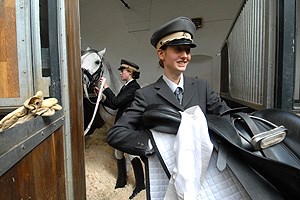Hello friends i got a youtube film here and i want to know what you think of it, im seeing things and i wanne know if im correct
http://www.youtube.com/watch?v=ds8M914pBHU&feature=player_embedded
Hello friends i got a youtube film here and i want to know what you think of it, im seeing things and i wanne know if im correct
http://www.youtube.com/watch?v=ds8M914pBHU&feature=player_embedded
| Start: | Nov 13, '10 |
| End: | Nov 14, '10 |
| Location: | "Mearas Stables" |
 State of the art biogas plant facilitates renewable energy – a stimulus for a whole region
State of the art biogas plant facilitates renewable energy – a stimulus for a whole regionHere is a link to a Financial Times Art article that I thought this group might find interesting. It discusses the associations of animals in contemporary art and focuses a good deal on the depiction of horses.
http://www.ft.com/cms/s/2/bff94af8-d7e0-11df-b044-00144feabdc0.html?ftcamp=rss
Here is a quote from the section about Stubbs.
“There were many sporting painters but only George Stubbs transcended the genre by delivering pictures in which horses and men were virtual peers. Stubbs changed the nature of the genre from equestrian portraits to horse portraiture. The secret of his success lay in his unparalleled mastery of equine body language: the flare of a nostril, the widening of an eye, the accurate fixing of gait and stance. Stubbs was the first to realise that, hitherto, equine representation had been conforming to templates supplied largely by the Renaissance; and that freshly exacting anatomical study, a scientific accumulation of empirical information, was the condition of individualising his subjects; of making not just horse portraits but something like equine genre paintings.
It was only by being a true anatomist, which is to say, using death to inform the trick of life, that Stubbs could produce The Anatomy of the Horse (1766), the masterpiece that made his name and fortune. Subjects would be brought to his attic studio where he would hang them in a complicated harness-contraption from the ceiling and then methodically and slowly bleed them to death, injecting the veins and arteries with tallow to painstakingly preserve their external appearance through the skin. Eventually he would proceed to a flaying and thence to a careful, systematic dissection. What a Gothic romance! It was only from this shocking, protracted intimacy in which love and death were bloodily commingled, that Stubbs was able to liberate the horse from its confinement in the conventions of equestrian studies and reconstruct the pure animal as though never saddled: creating what were, in effect, equestrian nudes such as “Whistlejacket” (1762) or fantasies of entire families of mares and foals gathered together in some imaginary glade like a school of Houynhyms “

 Hannah Zeitlhofer, our female eleve at the Spanish Riding School, made it today for the public performance! She rode a young stallion and did an outstanding job!
Hannah Zeitlhofer, our female eleve at the Spanish Riding School, made it today for the public performance! She rode a young stallion and did an outstanding job!